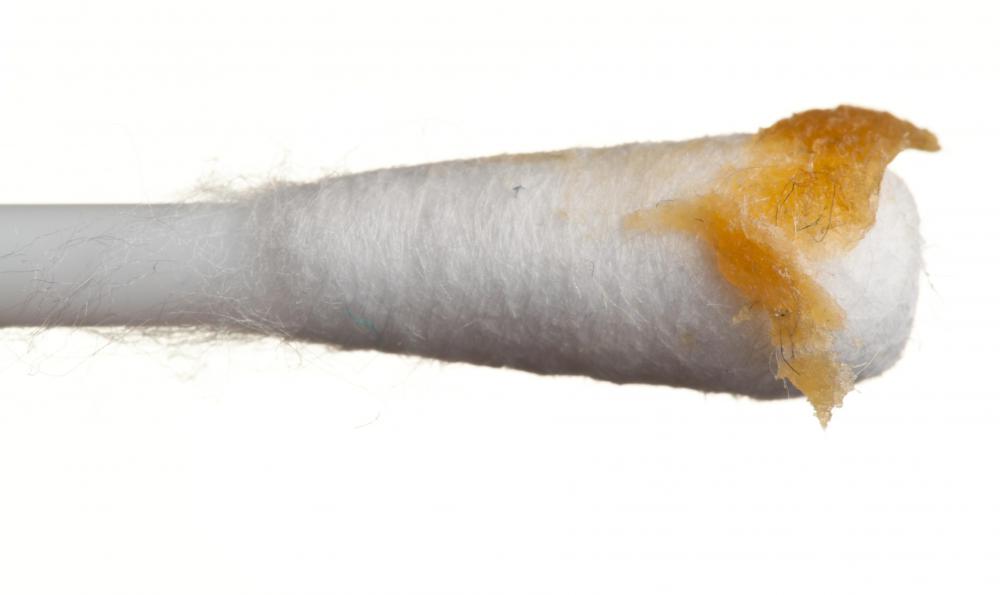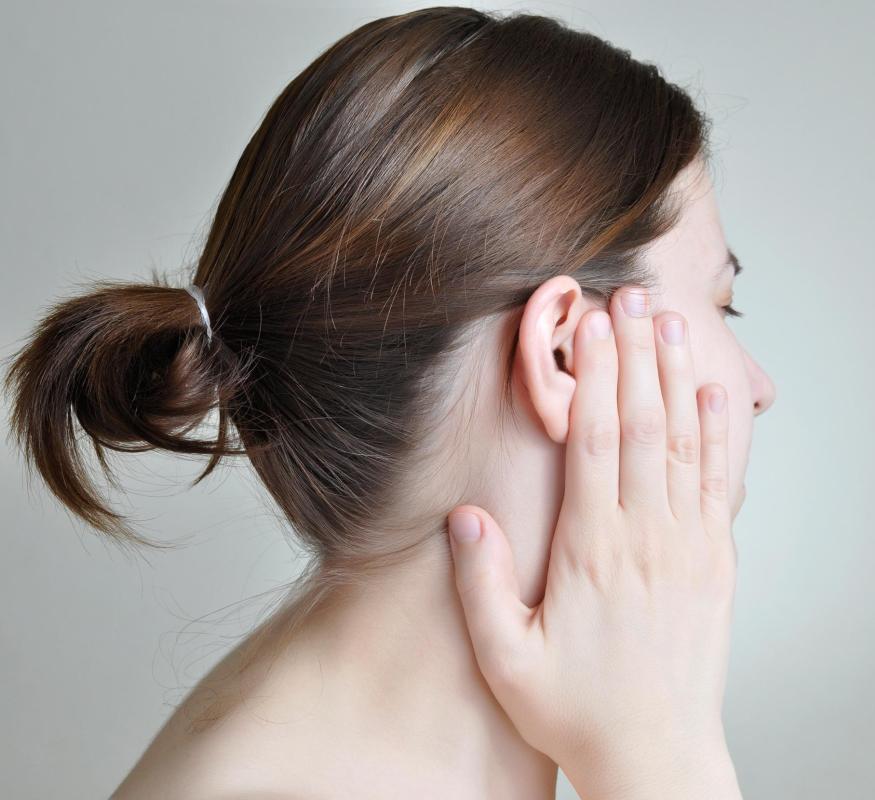At WiseGEEK, we're committed to delivering accurate, trustworthy information. Our expert-authored content is rigorously fact-checked and sourced from credible authorities. Discover how we uphold the highest standards in providing you with reliable knowledge.
What is Excessive Ear Wax?
Normally, ear wax — the sticky, orangey-brown substance secreted by glands within the ear — supports one’s health by catching foreign particles before they can penetrate the inner ear. In some individuals, however, this secretion is produced in abnormally large quantities or fails to drain properly, leading to excessive ear wax. This condition can lead to a range of problems, from ear pain to compromised hearing. Luckily, with the help of a physician, excessive wax in the ear can usually be treated fairly easily.
In most individuals, ear wax gradually makes its way from the site of its production to the outer ear. Once it has reached the outer ear, it usually falls out or is unconsciously rinsed away during bathing. For reasons that are not fully understood by researchers, however, this self-cleaning process is impaired in some people. These individuals may produce abnormally large quantities of ear wax or their ear wax may resist the natural drainage process. In either circumstance, they eventually experience a buildup of ear wax.

This excessive ear wax typically hardens over time, often leading to a range of ear problems. For instance, the wax can cause discomfort or even pain in the affected ear. It can also lead to diminished hearing or the perception of ringing or wave-like noises, a condition known as tinnitus. Luckily, the problems caused by excessive ear wax are usually impermanent, and are generally resolved by the removal of the wax buildup.

The removal of ear wax is often a fairly simple procedure. Nevertheless, due to the fragile nature of the inner ear, wax removal should in most cases be performed by a physician. The two most commonly used techniques for the elimination of a wax blockage are irrigation and curette scraping.
To remove excessive ear wax by irrigation, a physician uses a syringe to spray a gentle stream of warm water or saline solution into the affected ear. The solution causes the wax blockage to soften and drain from or fall out of the ear. This process may need to be repeated several times before the wax becomes dislodged.
Some physicians favor treating excess wax with a small, scoop-shaped tool called a curette. The curette is gently inserted into the affected ear. Then, the physician simply scoops the ear wax blockage out of the ear.

Those experiencing an ear wax blockage may be tempted to try treating it at home. However, sometimes symptoms which suggest a blockage may actually result from a more serious condition. Further, the delicate structures of the inner ear can be easily damaged by improperly used cotton swabs or other cleaning devices. Therefore, while excessive ear wax may seem like a minor health concern, affected individuals should consult a physician for evaluation.
AS FEATURED ON:
AS FEATURED ON:















Discussion Comments
A third treatment favored by modern ENTs is microsuction. A tiny vacuum tip is used to remove wax under direct microscopic view. This is a fairly quick procedure with lower risk of trauma to the canal walls.
@rs4life- I looked into ear candling a few years ago when I was having trouble finding a good solution to chronic overproduction of ear wax. What I found was that there is absolutely no solid, scientific evidence to support the claims that candling does anything at all. In fact, every study that was done showed no change in the ear wax. There is even reason for caution, because there were reports of people being burned and ear drums being ruptured.
There are now many really good products on the market that you can buy at your local drug store. Look for the ones that contain carbamide peroxide. I’ve found those work the best. Good luck!
I’ve always wondered about candling as an alternative and holistic ear wax treatment. I’m interested in learning more if there is someone who can share their experience.
My boyfriend damaged his ear drum by trying to remove excess ear wax himself. It’s definitely *not* something anyone should try to do at home.
Post your comments